https://vimeo.com/1011041888 Welcome back to our weekly update. Today is Friday, September 20 2024 and here’s what’s happening in the plumbing, mechanical and HVAC world. In this edition, we talk ServiceTitan Elite Trades Championship Series, what’s happening in Washington DC these days, and NEXSTAR Network’s Super Meeting Read more
Featured Articles

Welcome back to our weekly update. Today is Friday, September 20 2024 and here’s what’s happening in the plumbing, mechanical and HVAC world. In this edition, we talk ServiceTitan Elite Trades Championship Series, what’s happening in Washington DC these days, and NEXSTAR Network’s Super Meeting.
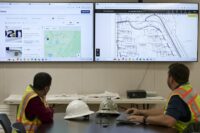
The BitRip® App, Desktop Pro, and scannable BR Code™ labels from Duck Pro® by Shurtape® are delivering tremendous value in safety inspection documentation The MEP contracting industry has adopted digital technology over the last 15 years or so with a pace that sometimes seems as fast as a Lucid Air Sapphire’s zero-to-sixty time. We could Read more
The BitRip® App, Desktop Pro, and scannable BR Code™ labels from Duck Pro® by Shurtape® are delivering tremendous value in safety inspection documentation
The MEP contracting industry has adopted digital technology over the last 15 years or so with a pace that sometimes seems as fast as a Lucid Air Sapphire’s zero-to-sixty time. We could debate the degree to which the industry has adopted digital technology willingly versus opportunistically, but at the end of the day digital technology is saving lives, time, and money.
Technologies including mobile communications, building information, modeling, virtual reality, drones, the internet of things, and 3-D printing have drastically changed the construction industry, but the degree to which different general contractors and contractors use these technologies varies widely. Across the construction industry the drive to improve worker safety is constant and while products like safety beacons are a primary path for workplace safety, more can be done. According to the U.S. Bureau of Labor Statistics (BLS), nearly one in five deaths among U.S. workers is in the construction industry, and 1,056 construction workers died on the job in 2022.
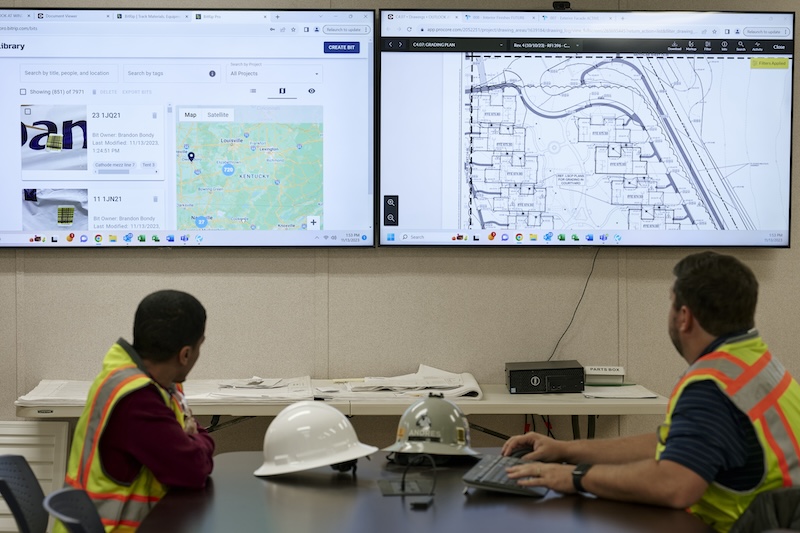
Each scan of a BR Code™ label reveals the code’s GPS location, unlocking field visibility and helping managers locate assets in the field.
Also, according to the BLS, each year, about 1% of construction workers suffer a fatal injury, which is the highest rate in any industry. So, it’s safe to say that nearly everyone involved in the mechanical, electrical, and plumbing (MEP) industry aspires to improve worker safety, and if properly adopted and used, digital technology can make a dramatic difference.
A Military Origin
While safety wasn’t the initial impetus for the products he imagined and helped to create, Nick Dimitruk wanted to find a better way for people to keep track of materials, equipment, and more. He was stationed in Afghanistan in 2011, serving as a Marine logistics officer, and he needed a simple way of keeping track of aviation materials, equipment, people, and aircraft.
“Clipboards and spreadsheets weren’t cutting it. When I looked at possible asset tracking solutions, they were too expensive, complicated, and bloated. I wanted something simple,” he recalled. He needed a solution that was straightforward, that provided a GPS location, and was updatable.
“I needed something I could train my Marines to do in minutes and not weeks, and nothing was out there,” he said. Ten years later, he and Catherine Chapman co-founded Nastro Technologies, BitRip’s parent company.
Designed for the field and built for managers, the BitRip® App, Desktop Pro and scannable BR Code™ labels from Duck Pro® by Shurtape® seamlessly track any type of physical asset using heavy duty labels, and each code allows users to store massive amounts of data and track every scanned location, unlocking field-level visibility.
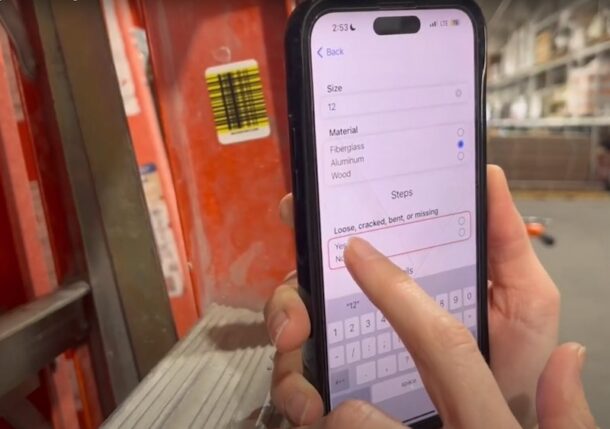
Ladders are supposed to be inspected daily, but a 2018 U.S. workplace safety survey found that over $17 billion is spent on falls resulting from working at height. BitRip® and BR Code™ labels can help track ladder inspection compliance.
This three-pronged solution provides a huge array of applications including asset, maintenance, and shipment tracking, but the construction safety arena has evolved into one of the biggest applications for BitRip and BR Code labels. Chapman said the app company and Shurtape Technologies developed a simple solution that allows users to quickly and easily “do the right thing” when it comes to safety inspection management, with specific forms for fire extinguishers, personal protective equipment (PPE), and ladders/lifts.
According to Occupational Health & Safety magazine, there were 5,370 construction industry ladder injuries in 2020. The publication also reported that a 2018 U.S. workplace safety survey found that over $17 billion is spent on falls resulting from working at height. According to the Occupational Health & Safety Administration (OSHA), ladders are supposed to be inspected daily, but it seems unlikely that happens on every jobsite every day.
Helping Them Go Home Everyday
“It doesn’t have to be hard. We’re trying to make it super simple to just do your inspection, look at it, and make sure you’re safe before you or anyone else gets up on the ladder. Ladder-related falls are one of the main culprits preventing workers from going home to their families at the end of the day, and BitRip and Shurtape are excited to provide a solution,” she said. From a dollars-and-cents standpoint, when a company can show documentation that proper ladder inspections were performed prior to a ladder accident, that proof can also provide legal protection and help prevent potentially huge legal liabilities.
Graham Construction, a leading Midwestern general contractor based in Des Moines, IA, has over 100 field employees working on an average of 25 active projects on any given day throughout Iowa and Nebraska. One of the most essential tenets of the company’s success is a total commitment to safety.
Graham’s Superintendent, Joe Thomas, and his team strive to ensure all PPE is regularly maintained and inspected and to know the proper working condition and whereabouts of valuable and essential tools and equipment. They had been tracking safety equipment inspections using forms generated by a popular construction management software program and stored on a shared network drive, and they used a common tool and materials software management solution for tracking tools and equipment.
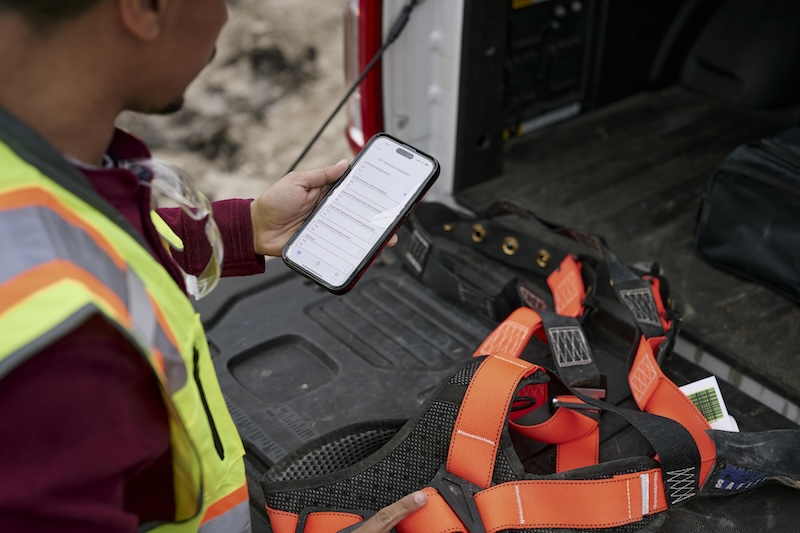
Affixing BR Code™ scannable labels under the inspection tags of safety harnesses allows the safety devices to be digitally “connected” to a Bit, or unique file in the cloud. The rugged, inexpensive labels provide flexibility in organizing, sharing, and storing data, and are making an enormous difference in safety, equipment, and maintenance inspections, and tracking.
However, those programs didn’t provide the kind of visibility and ease of use that Thomas and his team believed was possible. One of Graham’s yard managers told Thomas about BitRip and BR Code labels and soon he, and Eastern Nebraska Field Resource Leader Joe Lercara, and their teams were off and running with this solution.
“It only took about a minute to train them,” Thomas recalled. “I watched a few videos on it, ordered the BR Code Labels, and my yard assistant and I did a few test Bits. Then we got started,” he said. A Bit is a unique cloud-based file with data attached to one single BR Code label. They piloted the solution in their Omaha, NE, location and then started putting the labels on the company’s fall protection equipment.
Thomas explained that he sees BitRip as especially valuable in monitoring fire extinguisher and ladder inspections since the app features check-listed inspection forms. “The labor foremen usually do the inspections so they will have it on their phones, they’ll be able to scan it in and do a weekly fire extinguisher checklist quickly and simply,” Thomas said, adding that the same applies to ladder inspections.
“So, you can’t just sit in a trailer and ‘pencil whip’ the things. So, we can see that they have gone out and scanned the ladder, scanned the fire extinguisher, and see that they actually looked at it,” he added.
On-the-go Records and Certifications
Donna Thompson has worked as a site-safety manager on projects all over the western U.S. over the last two dozen years. She’s currently the Senior Safety Manager for the Austin, TX, and Houston offices of San Antonio-based Big State Electric, Ltd. One aspect of her job includes managing and maintaining the safety training and certifications for scissor lifts, forklifts, and heavy equipment for more than 250 employees.
Throughout much of her career, keeping certification and inspection records current and present has always presented a major and time-consuming challenge. “At the time of training I had to create a card saying they’ve been trained, and those cards would get lost a lot or damaged and would need to be redone because you’re not allowed to use the equipment without proof of training,” she said. When she first learned about BitRip and BR Code labels, her thoughts immediately jumped to safety and training documents.
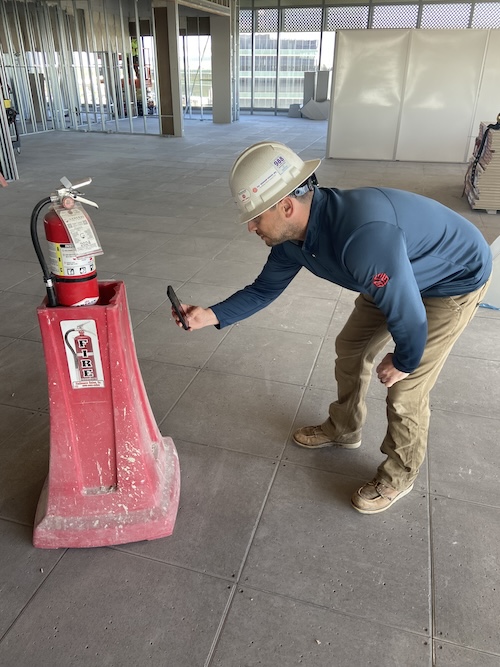
Companies like Graham Construction are realizing multiple benefits using BitRip® and BR Code™ labels to quickly and easily track and manage safety inspections with forms for fire extinguishers, personal protective equipment (PPE), and ladders/lifts.
At Big State, the process of creating a training card takes 10-15 minutes per card, multiplied by over 250 employees (between 40-63 hours) . Plus, with all the different types of trainings/certifications (ranging between 8-40 depending on the employee), the time involved in replacing lost/damaged cards and doing updates really adds up. Thompson added that having a user/operator unable to do his job because he doesn’t have proof of certification is a huge waste of time and can negatively impact schedules.
Every quarter, she and her team do inspections on fall protection, ladders, and the company’s bigger tools. Prior to finding BitRip and BR Code labels, the inspections were all recorded on paper. “So, I could see, yes, this inspection on this ladder number was done, but I would have to go through probably 400 pieces of paper to find that inspection on that ladder,” Thompson said. “And if something happened, God forbid, you know, someone got seriously injured, I would have to prove inspections and that was hard to do in a timely manner.”
Now Thompson records all ladder and fire protection equipment inspections on a Bit. She has also benefited immensely from BitRip’s inspection forms, which simplify the process and help with compliance. “And all I have to do is pull up that equipment number and it shows me all the inspections, so it’s very simple to prove that we’ve been doing our inspections the way we should, and it saves a ton of time.”
Thompson said that the field employees have fully embraced BitRip and BR Code labels. “So, they’re happy because it takes a lot less time in the field. And that’s always one of those, you know, you’re taking guys away from their normal job in the field and so it costs money to do all of that. And it’s a lot less time to do it that way instead of having to deal with pieces of paper,” Thompson added.
Staying On It
Graham Construction’s Thomas said BitRip Desktop Pro allows him to easily create projects and view each Bit, as well as calculate billing for the barrier system on each job. Graham uses orange PSL (Permanent Scannable Labels) BR labels and yellow PXL (Permanent Heavy-Duty Scannable Labels) BR labels.
Shurtape also offers other BR Code labels for a variety of applications, including:
- FL 227 BR scannable paper tape codes – for indoor use, can be torn at any length and will conform to a range of surfaces and substrates while offering easy removal.
- PC 627 BR scannable duct tape codes – for durable adhesion to multiple surfaces, and constructed with a waterproof backing, allowing for indoor or outdoor use.
Thomas said that there have been “zero issues” with the BR Code labels and they have stayed affixed on every item they’ve been used on, including under the inspection tags on safety harnesses. By connecting the physical world with rugged, inexpensive labels then providing a huge degree of flexibility in organizing, sharing, and storing digital Bits, BitRip and BR Code labels are making an enormous difference in safety, equipment, and maintenance inspections and tracking.
According to satisfied customers like Big State Electric and Graham Construction, the solution’s ease of use combined with a very affordable price point (the mobile app is free, Desktop Pro is $90/mo., and the labels are roughly $1-$2 apiece), make it a “no brainer.”
Try BitRip for free by downloading it via the App Store or Google Play, access a free 30-day trial of BitRip Desktop Pro here, and purchase BR Code labels by clicking here.

https://vimeo.com/1008155465?share=copy On this week’s update we address the fear of Friday the 13th, chat with AHR Expo director of marketing Nicole Bush about the AHR Expo 2025 in Orlando in February, and highlight Taco After Dark with Joha Barba, Taco Comfort Solutions’ director of training. We finish up with sharing the latest Make Trades Great Read more
On this week’s update we address the fear of Friday the 13th, chat with AHR Expo director of marketing Nicole Bush about the AHR Expo 2025 in Orlando in February, and highlight Taco After Dark with Joha Barba, Taco Comfort Solutions’ director of training. We finish up with sharing the latest Make Trades Great Again and Appetite For Construction podcasts and how to connect with Mechanical Hub Media on ideas and topics that resonate in the industry. Make it a lucky Friday the 13th!
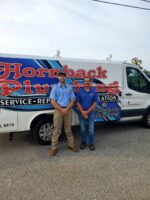
By Donnie Hornback I had always envisioned my son taking over my company after me. As parents, we dream of watching our children prosper in their careers and want to do whatever we can to help them succeed. When you own a business, having them follow in your footsteps seems like the perfect way to Read more
By Donnie Hornback
I had always envisioned my son taking over my company after me. As parents, we dream of watching our children prosper in their careers and want to do whatever we can to help them succeed. When you own a business, having them follow in your footsteps seems like the perfect way to ensure their success.
I saw my company, Hornback Plumbing, as a way to create a family legacy. When my son Jesse began working with me, it filled me with immense pride. Seeing my career and business becoming something we could share together was thrilling and exactly what I had hoped would happen. Soon, I could hand the reins over to him and step away.
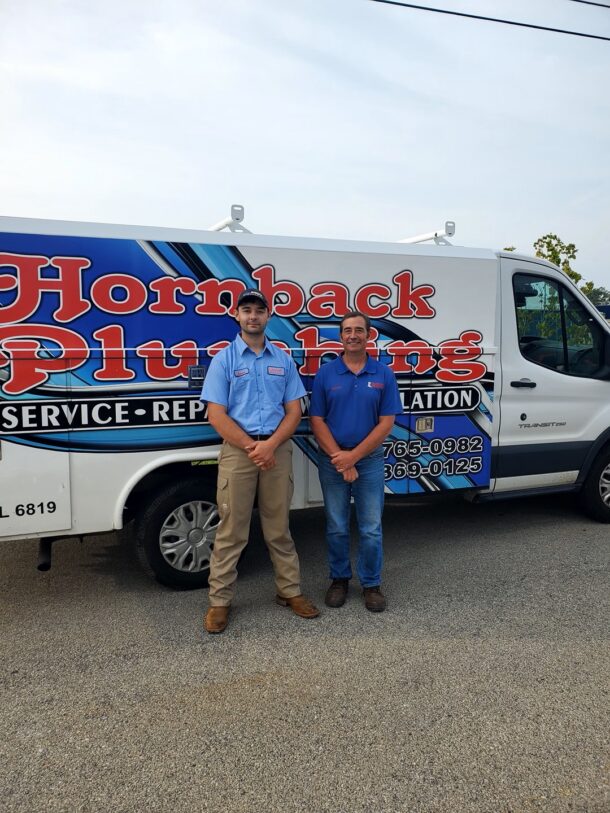
(eft to right) Donnie and Jesse Hornback.
What I didn’t consider is that this may not have been what he wanted.
Jesse had been working to impress me. He started taking on responsibilities he thought I wanted him to take on and shied away from different sectors of the company where his interests truly lay. He was working hard, but that’s all I could see; I didn’t realize that his heart wasn’t in it.
In 2022, after several conversations with Jesse, I decided to sell the company to Leap Partners. But it wasn’t until months later that Jesse confided in me that he had been overwhelmed by the idea of succeeding me. The sale came as a relief for him and ended up changing both of our lives for the better. Since the sale, I’ve been able to watch him become independent and flourish in his career — freed from the burden of my expectations.
It was an eye-opening moment for me and allowed me to gain perspective on the things I learned about the special nature of working so closely with one of your children.
Collaboration is vital
Working with your children in an intensive industry like plumbing can create a working relationship that’s overbearing for them. You can’t just move the same parent-child dynamic into business and expect it to work. Make sure you keep an open dialogue and create an atmosphere of collaboration. Being stubborn with your own ideas all the time won’t work. There are likely times when they might know better than you.
I remember one instance when Jesse was adamant that we needed a heavier truck to pull an excavator. While I disagreed, I trusted his judgment, and it turned out he was right. It was the perfect truck for that project and is one that will continue to benefit our company for years to come.
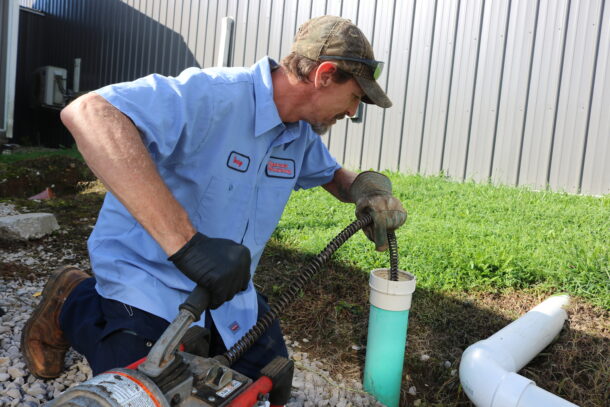
Failure can be good
I found one of the hardest parts of working so closely with your children is letting them learn from their mistakes. As parents, it’s instinctive to protect them; but they must have the freedom to learn on their own and make their own mistakes. Don’t throw them to the wolves, but minor setbacks can be perfect learning opportunities. Sometimes, failure is the best way to reach success.
Above all else, trust them
The best advice I can give is simple: Trust your kids. Understand that what you want might be entirely different from the path they see for themselves. After hearing Jesse’s relief about the sale, I realized how essential it is to have a transparent relationship when working with your children. I didn’t have this kind of relationship with him before, and now I can see this had been stifling his personal development.
It’s OK for them to not want what you want. Finding a partner like Leap that helped us walk through these challenges, while supporting our company, was such a relief. They helped our company through the transition and provided support for us along the way.
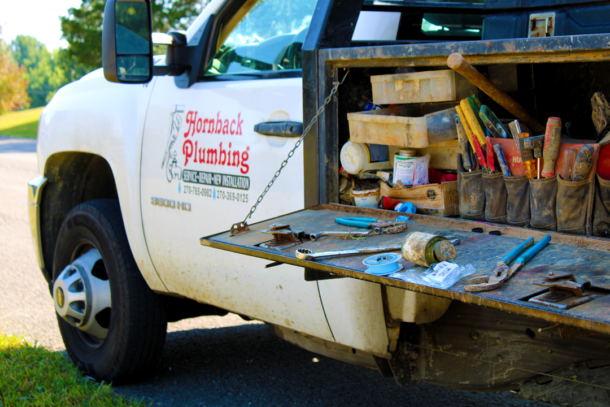
Since the acquisition, I have seen Jesse prosper in his career. He’s found his passion within the company without having the pressure of becoming the boss and can now pursue his own career path.
Stepping back from what I wanted allowed my company’s legacy to remain intact and alleviated the pressure on Jesse. Now, with the help and guidance of Leap Partners, he’s in a position where he can truly thrive professionally — in the way he wants to. And I’ve never been prouder to be his father.
Author Bio: Donnie Hornback is the general manager of Hornback Plumbing, a member of the Leap Partners family, operating in South Central Kentucky. He started the company in 2005 and has since expanded his services to include more than 20 home services associates, including his son Jesse.
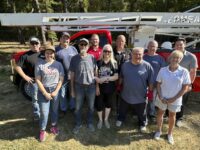
Xylem, Chris Long Foundation’s Waterboys initiative and Water Well Trust partner to ensure reliable water supply for local Richards family Brett, Paula and their son, Chaz Richards will have secure access to safe and reliable water, thanks to a recent collaborative effort between Xylem Inc., the Water Well Trust (WWT) and Waterboys – a charity Read more
Xylem, Chris Long Foundation’s Waterboys initiative and Water Well Trust partner to ensure reliable water supply for local Richards family
Brett, Paula and their son, Chaz Richards will have secure access to safe and reliable water, thanks to a recent collaborative effort between Xylem Inc., the Water Well Trust (WWT) and Waterboys – a charity initiative founded by two-time Super Bowl Champion, Chris Long. As part of the project, the family received a comprehensive upgrade, including all necessary equipment and installation required for drilling a new well and building a pump house. Additionally, project partners worked to update the property with fresh mulch and a new coat of paint. Donations from local distributor Warren Pump & Supply Co., well driller and pump installer Mount Water Well Drilling, as well as The Vinyl Institute who donated PVC piping material, rounded out the project and were instrumental to its success.
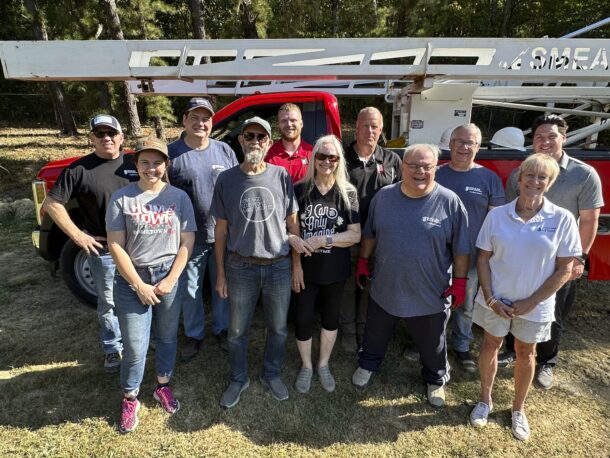
“We’ve known the Richards family for years and I’m glad we can help them during this challenging time. Our goal is to ensure they have plenty of good, clean water in their home, so they won’t have to worry about water issues anymore,” said Todd Mount, Mount Water Well Drilling. “I think this project will be a blessing for their family, and it’s a blessing for us to be able to help. One of the things I love about this business is that we’re always helping someone get good water in their house, no matter what the situation is – that’s what we do.”
Since 2008, the Richards family has faced severe water shortages due to a low water supply in their well and an outdated casing. Plans to replace the defective well were put on hold due to unexpected medical issues for both Brett and Paula. This left the family struggling with basic needs, limiting showers to just three minutes, not using their washer for five years and barely using the tap. As the water supply continued to worsen, caring for up to four foster children became increasingly challenging, with even flushing the toilet becoming an issue at times.
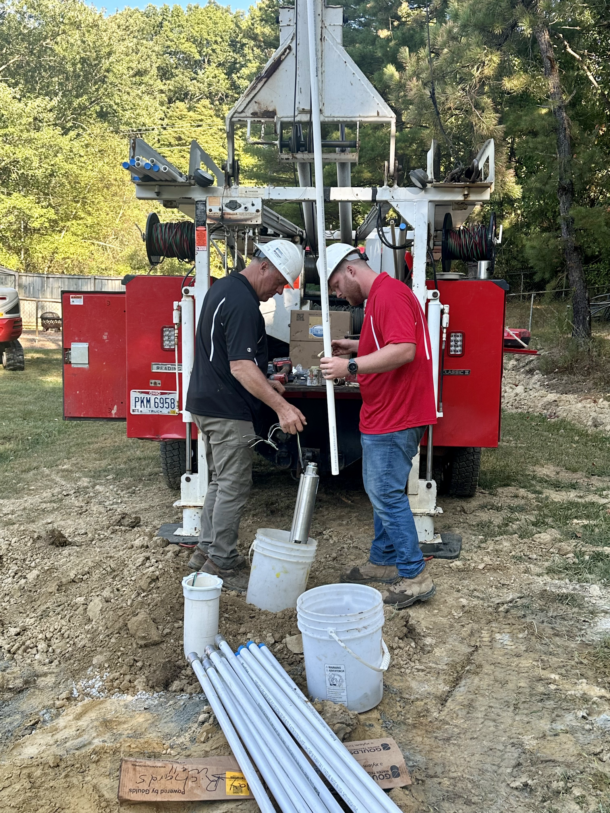
“Our family has struggled with low water resources for years, adapting to a lifestyle that many wouldn’t imagine—from taking quick, military-style showers to timing our laundry days carefully. When we got the call about this project moving forward, it was an incredible blessing,” said Brett Richards, Water Well Trust beneficiary. “The thought of finally being able to turn on the water and enjoy a proper shower or even consider a garden in the future is overwhelming. We’re truly grateful for this opportunity to improve our daily lives.”
“Providing clean, reliable water to families like the Richards is at the heart of what we do. Every family deserves the peace of mind that comes with knowing they have sustainable safe water in their home, and we’re honored to be a part of making that a reality,” said Chris Long, 2018 Walter Payton Man of the Year Award winner and founder of the Chris Long Foundation.
The Richards family’s well upgrade marks the 19th HometownH2O project, an extension of the Chris Long Foundation’s domestic water initiative working alongside WWT and Xylem to provide clean, sustainable water to communities in need. Water scarcity issues currently leave more than 2.2 million Americans without access to clean water, making this joint effort between Long, his Foundation’s Waterboys initiative and Xylem a vital resource for families across the country.
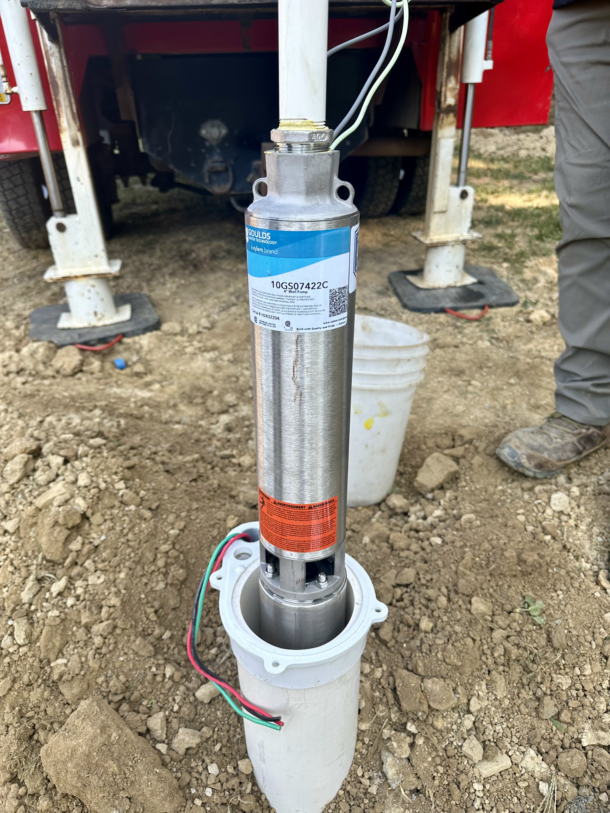
“We are incredibly proud to be part of this impactful initiative for the Richards family. By providing them with a new well and pump house, we’ve been able to address their critical water needs and offer a renewed sense of stability,” said Susan O’Grady, senior director of marketing, building services and agriculture, Xylem. “This project exemplifies our commitment to delivering innovative water solutions and underscores the significant impact that secure access to clean water can have on a family’s quality of life.”
Xylem, in conjunction with its Goulds Water Technology brand, is engaged in regular water well initiatives to provide secure water access to rural areas, striving to increase public awareness of the challenges surrounding lack of water access. For more information about the Chris Long Foundation’s HometownH2O projects, visit waterboys.org/hometown.
